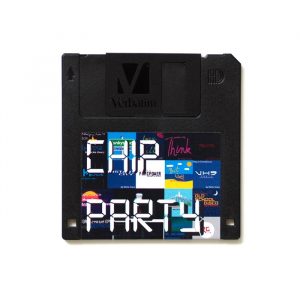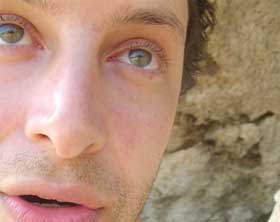 Yury Gitman is a designer, inventor, an award-winning artist (Noderunner received an Ars Electronica Golden Nica for Net Vision in 2003) and i owe him one of my first posts on the blog. It was a story about Magicbike, the bicycle turned mobile WiFi hotspot for up to 250 users in a radius of 30 meters indoors and 100 meters outdoors. A network of his Magicbikes allowed him to be one of the first people to use the Internet from inside the New York subway. Yury is also teaching at the Parsons Design + Technology Program and last year, he opened a product design company called Banana Design Lab.
Yury Gitman is a designer, inventor, an award-winning artist (Noderunner received an Ars Electronica Golden Nica for Net Vision in 2003) and i owe him one of my first posts on the blog. It was a story about Magicbike, the bicycle turned mobile WiFi hotspot for up to 250 users in a radius of 30 meters indoors and 100 meters outdoors. A network of his Magicbikes allowed him to be one of the first people to use the Internet from inside the New York subway. Yury is also teaching at the Parsons Design + Technology Program and last year, he opened a product design company called Banana Design Lab.
Last year, you opened Banana Design Lab, a product design company focusing on lifestyle designs to entertain the soul. Do you think there’s a lack of such products on the market?
Are you being sarcastic? “Products” in my mind don’t have soul by design. They are created to make money not art. For the most part, when I walk into a store I see products that basically waste your life energy. What I mean is that they distract us and divert us from meaningful experiences, to the extent that our souls are softly hushed into silence. That’s a sweeping statement. But I think what happens is a combination of bad design mixing with all the difficulties of the product development cycle. Still, products could and sometime do have a soul.
“Art” has a soul, right? If one wants to make artifacts with a soul one should make art, right? Products are mass produced. On the contrary, art is traditionally thought of as original works or one-offs. But, why put boundaries on things? It’s so artificial, these boundaries. At the end of day “products” go out into the world in the hundreds and in the thousands. People take them home and kids grow up with them. Meanwhile, a tiny handful of people actually get “art” artifacts in their homes. I think the higher calling for me is to reach a lot of people. The exhibition space I’m conceiving for is a store shelf. For some reason it seems admirable, I’m much more intrigued by that.
When it comes down to it, as an artist, you make what you want to see in the world. If it was already in the world there wouldn’t be any incentive in creating it in the first place. I want Banana Design to be a small but innovative industrial design company that blurs the lines of art and product.
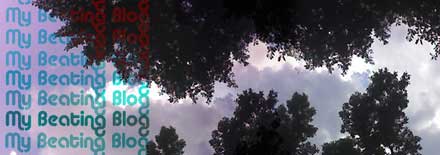 Are you working on new projects after my beating heart?
Are you working on new projects after my beating heart?
Last week I just launched a net.art work commissioned by Turbulence, My Beating Blog. It’s an experiment with the near future of blogging, in which I infuse increasingly commonplace biofeedback technology with
blogging. It’s a simple experiment where I’m anticipating the crafty convergence of a set of technologies before they actually fuse in the mainstream. I think we’ll see blogs like that become more common place in the next couple of years. Doing work like this, with emerging mediums, often gestates into insights about the expressive capabilities of these mediums.
And otherwise, I’m in a torrid love affair with my current long term project, My Beating Heart, so it’s hard to imagine a love after that. But i fill my notebook with around 100 ideas a year so I’m always journaling things I’d love to do. I haven’t really executed My Beating Heart as I envision it yet so I’m really interested in continuing to work on it. Every iteration is getting beautifully closer and closer.
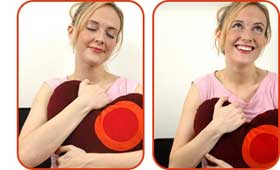 My Beating Heart, is a high tech “toy” [for lack of a better word] that calms you down faster than modern-day pharmaceuticals. I set out to make an experience that gets people into meditation. I wanted to make something high-tech and cool [meaning it has cultural cache] that actually helps people become more aware of themselves and their surroundings. That notion sounds like the anti-thesis of techie gadgets, but I really like this incongruity. In any case, what turned out is I think close to the mark. It doesn’t really inspire people to meditate per se, but it does relax people, tickle their sensibilities, and make them feel warm inside. It gives me a chance to mix my experience as a yoga and mediation practitioner with electronic art and contemporary design. That’s really one of the directions I’m trying to move my work into.
My Beating Heart, is a high tech “toy” [for lack of a better word] that calms you down faster than modern-day pharmaceuticals. I set out to make an experience that gets people into meditation. I wanted to make something high-tech and cool [meaning it has cultural cache] that actually helps people become more aware of themselves and their surroundings. That notion sounds like the anti-thesis of techie gadgets, but I really like this incongruity. In any case, what turned out is I think close to the mark. It doesn’t really inspire people to meditate per se, but it does relax people, tickle their sensibilities, and make them feel warm inside. It gives me a chance to mix my experience as a yoga and mediation practitioner with electronic art and contemporary design. That’s really one of the directions I’m trying to move my work into.
So are you a designer or an artist? Both? Where do you draw the line between both disciplines?
Uhm, I’m don’t really draw that line. But for the outside world I do find myself having to explain my motivations. So to answer your question. An artist negotiates chaos. An artist is concerned with expression and with articulating the sublime. Artists work in the realm of ethereal and the abstract. A designer is concerned with negotiating their inner-artist and presenting a structured order.
Designers are concerned with communicating concepts and articulating abstracts. Designers boil down ideas to their core. Designers are the foot soldiers. Artists are the ‘blue sky” strategists. It’s pointless to be so defined that you only do one thing, art or design. They inform each other. There should be one word that incorporates the artist and designer. Maybe that word is “inventor” or “creator,” but those are loaded words too.
I journal and experiment as an artist. I try to execute as a designer. I meditate as a celestial being. I feel very comfortable as an artist. As a designer I’m still learning the basics.
Does the new company leaves you time to develop some more artistic projects?
Uuuuuh. Hmmm. I get criticized a lot for being single minded by people I talk to. I focus on one project, like Magicbike or My Beating Heart, for years at a time. I take these projects on, as well as derivative work, because they have incredible depth. It takes time to get into it. The new company doesn’t leave me a lot of time to have much of a social life. I also don’t have as much time as I’d like a lot to show and exhibit work. But developing artistic projects is something I’m just driven to do. I journal extensively and prototype as often as I can. So I spend a lot of free time exploring how tactile mediums can mix with embodied (or physical) computing.
Honestly I’ve been looking towards yoga and meditation for inspiration in my work. I think those disciplines offer a lot of lessons for workings with the body and computing. I’m really just interested in growing as a industrial designer and incorporating mindfulness into technology.
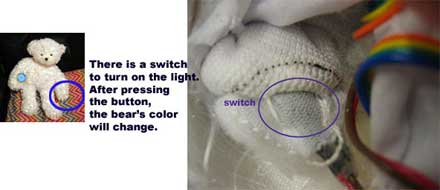 You’re also teaching at Parsons. Can you tell us what you tried to achieve with the Making Toys workshop?
You’re also teaching at Parsons. Can you tell us what you tried to achieve with the Making Toys workshop?
Well I’m trying to achieve a lot. Obviously I want to teach the students how to think creatively and make compelling electronic toys. I try to create a thorough blog for the class and make the students blog and document all their work. They are great teaching aids, blogs. Students learn from each other a good deal and it helps me see where each student is at and where the class is at.
Also, I’m trying to take a stab at developing an “open courseware” type site that teaches people (outside my class) how to make toys. It’s a far cry from being very useful open courseware but it’s a step in the right direction.
But I can’t help to read a subtext to your question. Are you really trying to ask me “what subversive thing are you trying to achieve with the toy workshop?” Great question Regine.
Part of the reason for making open courseware is to show people how simple toy hardware and software is [by “software” I mean fabric and stitching]. The toy industry is a funny thing. The technology in toys for the most part [a handful of companies not withstanding] is fairly simple. Middle- and high-school students can go into Radio Shack, and with proper instruction, remake 90 percent of the electronics inside today’s toys. It’s just all a big secret. Where do you source your parts? Where do you source your fabric? How do you sew a switch into a toy? Where do you sew batteries in? Where do you get that annoying sound-box that repeats the same thing over and over until you have nightmares about it? Everyone hides their sources and their processes, secret, secret, secret. It’s sad. As a small business owner I understand the importance of all this. So I don’t want to say trade-secrets are a bad thing unequivocally. Trade-secrets can be practical for a healthy business. But the basic stuff shouldn’t be a secret.
I’m an internet kid. I think viewing the source code of html is still one of the coolest things about the internet. So I’m kinda trying to bring the more enlightened aspects of the internet into the art and craft of toy design. In the class the students first homework assignment is to buy a battery operated stuffed animal. The following class we carefully take it apart and photograph everything. They post it all on the blog and we review. It’s a great learning experience. They blog the insides and outsides of all their homework and I try to make the class as well documented as possible on the blog.
We are talking about peoples’ creativity and peoples’ playtime. It’s important. When we play we have tremendous insights. Everyone has a memory of a childhood toy. There is a magic to this artifact. I just want to invite more people to make toys. I think today’s toys are mostly wanker. We need more toy makers participating. We need more cross-fertilization and diversity in the art of toy design. So basically, I want to open-source the electronics in the toy industry. That’s what I’m “trying to achieve…”. The class takes a small step into that direction.
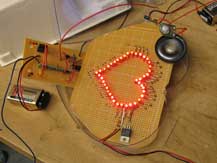
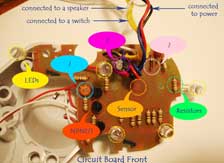 How would you describe the relation between art forms that use emerging technologies and the traditional art forms?
How would you describe the relation between art forms that use emerging technologies and the traditional art forms?
Great question. You need the space of a book for that because you have to sight countless references to prove a point. So can I just pontificate without sighting any one or offering particular examples? Painting is a technology. Ceramics and sculpture are technologies. Technology is a the study of a body of techniques. When we say “we have the technology to do that” we mean “we have the body of techniques to do that.”
Artists love chaos. They love to make something uniquely expressive with a body of techniques that no one else had the vision to put together before. Artists who are drawn to emerging technology I think see the expressive nature of these mediums and want to play and experiment. Partly they want to be the first to do things, especially with emerging technology this is a big undercurrent. But what trumps this is the desire to make things they think should exist but don’t exist. They see a body of techniques and they just want to play around with them and see what happens. What are the thresholds of these emerging technologies? How do you break them? What happens at the fringes? What happens when you do something you are not suppose to do with them? Artists ask, “how do these techniques create meaning?” In a way, if you examine the methodology of a lot of artists who work with emerging technology they’ll have similarities to scientists. The difference is they have their own home-brew “scientific method.” They want to find the hidden order in things, the universal fabric. With that knowledge, you construct an expressive action that resonates at that same level, hitting an invisible nerve.
Bringing it back to earth, the relationship between emerging technologies and traditional art forms is a standard continuum. When
photography for example was an emerging technology, the first 2 or 3 decades had a tremendous amount of experimenting. People are still discovering the ghostly output of pin-hole cameras everyday. But the point is, it took a long time before photographs were hung in museums and the photographer was seen as having the same artistic merit as a master painter.
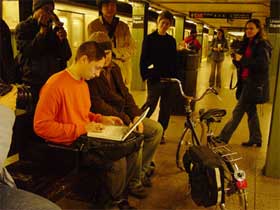 In any art, it’s always “using a body of techniques for an expressive act of creation.” That’s not all there is to art, but that’s a thread in all art on which to draw a continuum. Unfortunately it takes a really long time before people “get it,” like generations. So meanwhile, artists who use emerging technologies often have to put up with being seen as “engineering types” and not “real artists” in certain circles. Unless you wear those extra-thick rim glasses, have
In any art, it’s always “using a body of techniques for an expressive act of creation.” That’s not all there is to art, but that’s a thread in all art on which to draw a continuum. Unfortunately it takes a really long time before people “get it,” like generations. So meanwhile, artists who use emerging technologies often have to put up with being seen as “engineering types” and not “real artists” in certain circles. Unless you wear those extra-thick rim glasses, have
a crazy name no one can place, or have a combo of bad clothes and bad hair, then you’ll be fine–and people will reach out to your work.
Could you give us the name of artists whom you particularly like but think don’t get the attention they deserve?
I have to say I’m kinda a recluse and don’t get out too much to see what everyone is working on. I’m sure there are hundreds of artists and works I’d love if I was aware of them. So my list is small and mostly biassed to people I bump into when I get outside. And for the most part I like art these days that interfaces with the body somehow, typically with the nervous system and glandular system–meaning you touch it and it has an emotional effect.
That said, here is my little list. It’s mostly of people whose work I’d like to see more of in the future.
BodyDaemon by Carlos Castellanos. Well he takes the cake. He built my holy grail. I hope to meet him one day. And I sincerely hope his work continues and is well supported.
Amos Bloomberg and Brett Schultz in collaboration. I always found myself liking certain projects at ITP (NYU) that Amos and Brett collborated on.
Olia Toporovsky taught me how to look at jewelry and metalsmithing. I’ve never appreciated earrings or necklaces before seeing her work in person.
An under-appreciated toy designer is Ingri at House of Ingri.
Alison Lewis. She does a lot of work with making wearables more interesting. And she tries to get girls excited and involved in technology. There are not enough women in technology and that is one of the reasons technology comes out so bad a lot of the times. Not that women are better then men, or vice verse. The cultural around technology is very unbalanced, and the sensibilities of half the population is absent. I just commend her efforts and vision.
Kenyatta Cheese. Not a artist but deserves more credit for his work. He understand the big picture (and nuts and bolts) of the future of online video distribution and creation.
His blog is always on the pulse of what’s happening in decentralized media.
I’ve always been a fan of Arial Churi and Amy Parness’s work.
Thanks Yury!

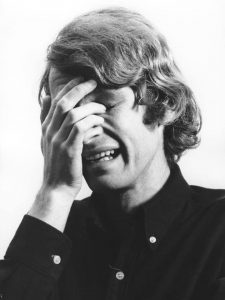
![7 art and tech ideas I discovered at Meta.Morf 2024 – [up]Loaded Bodies 7 art and tech ideas I discovered at Meta.Morf 2024 – [up]Loaded Bodies](https://we-make-money-not-art.com/wp-content/uploads/2024/05/53705969154_73dfdfea6f_c-300x200.jpeg)
